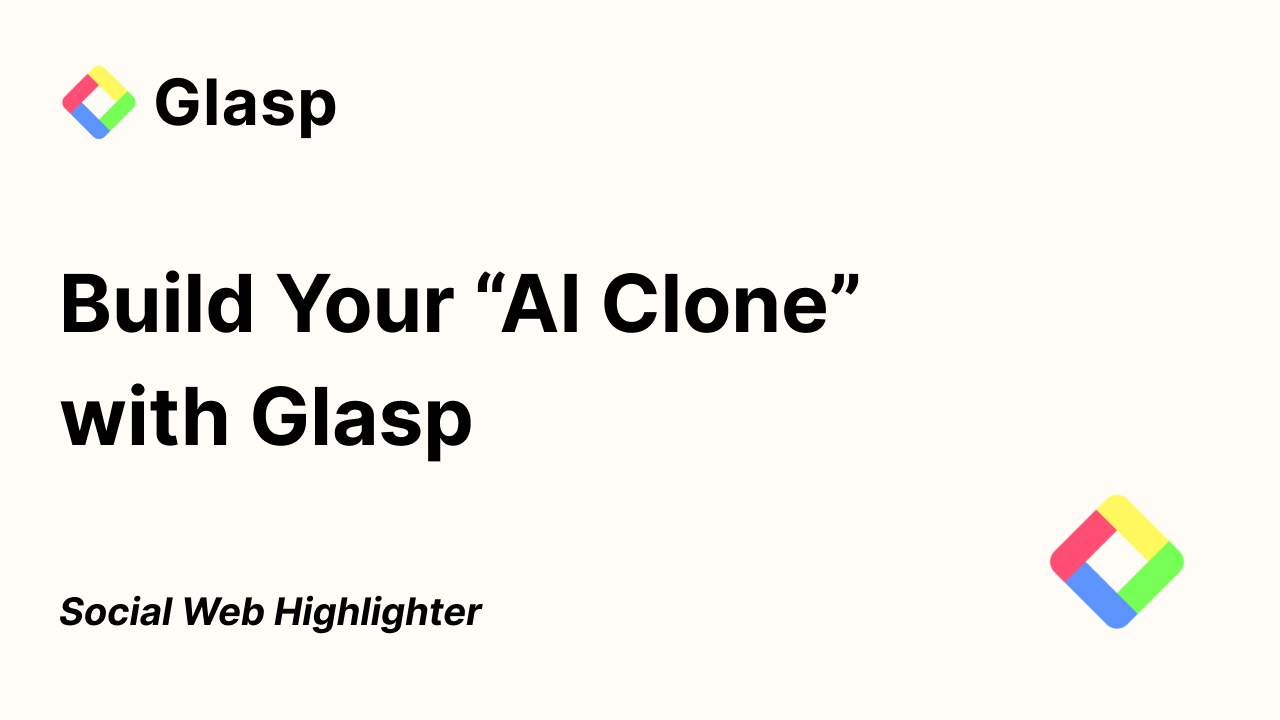
Table of Contents
Overview
In the ever-evolving landscape of AI-powered learning, finding tools that truly personalize the experience can be a game-changer. Glasp’s Learning Memory feature steps into this arena, offering a unique approach to knowledge retention and insight generation. It leverages your own highlights and notes to create an AI Clone, providing a personalized learning experience unlike any other. Let’s dive into the details of how this innovative tool works and whether it’s the right fit for your learning needs.
Key Features
Grasp’s Learning Memory feature boasts several compelling functionalities:
- AI Clone built from user highlights and notes: This is the core of the feature, creating an AI model trained on your specific learning history.
- Personalized insights and recommendations: The AI Clone can offer tailored suggestions and connections based on your past learning experiences.
- Integration with various content types (articles, PDFs, videos): Glasp works seamlessly across different formats, allowing you to learn from a wide range of sources.
How It Works
The magic of Glasp’s Learning Memory lies in its simplicity. You begin by highlighting and annotating content across the web – articles, PDFs, videos, you name it. Glasp diligently compiles these inputs, essentially feeding your AI Clone with your unique learning data. This AI Clone then becomes a powerful tool, capable of answering questions, summarizing information, and connecting ideas, all based on your specific learning history. It’s like having a personalized study assistant that understands your thought process.
Use Cases
Glasp’s Learning Memory can be applied in various learning scenarios:
- Enhancing personal study sessions: Quickly access summaries and insights from your past notes to reinforce your understanding.
- Organizing research notes: Easily connect different pieces of information and identify patterns within your research.
- Generating content summaries: Get concise overviews of complex topics based on your highlighted key points.
Pros & Cons
Like any tool, Glasp’s Learning Memory has its strengths and weaknesses. Let’s weigh the advantages and disadvantages.
Advantages
- Personalized AI interactions: The AI Clone is tailored to your specific learning style and interests.
- Supports various content formats: Learn from a wide range of sources without limitations.
- Encourages active learning: The highlighting and annotation process promotes deeper engagement with the material.
Disadvantages
- Requires consistent input for optimal performance: The AI Clone’s effectiveness depends on the quantity and quality of your highlights and notes.
- May have a learning curve for new users: Understanding how to effectively use the highlighting and annotation features might take some initial effort.
How Does It Compare?
While several tools aim to enhance learning, Glasp’s approach stands out. For example, Readwise focuses primarily on spaced repetition, helping you memorize information over time. Glasp, on the other hand, offers an interactive AI Clone that facilitates dynamic learning and insight generation. It’s a more active and personalized approach to knowledge acquisition.
Final Thoughts
Glasp’s Learning Memory feature offers a compelling vision for the future of personalized learning. By leveraging your own highlights and notes, it creates an AI Clone that can assist you in understanding, connecting, and retaining information more effectively. While it requires consistent effort to build a robust learning history, the potential benefits of having a personalized AI learning assistant are undeniable. If you’re looking for a way to actively engage with content and unlock deeper insights, Glasp is definitely worth exploring.

